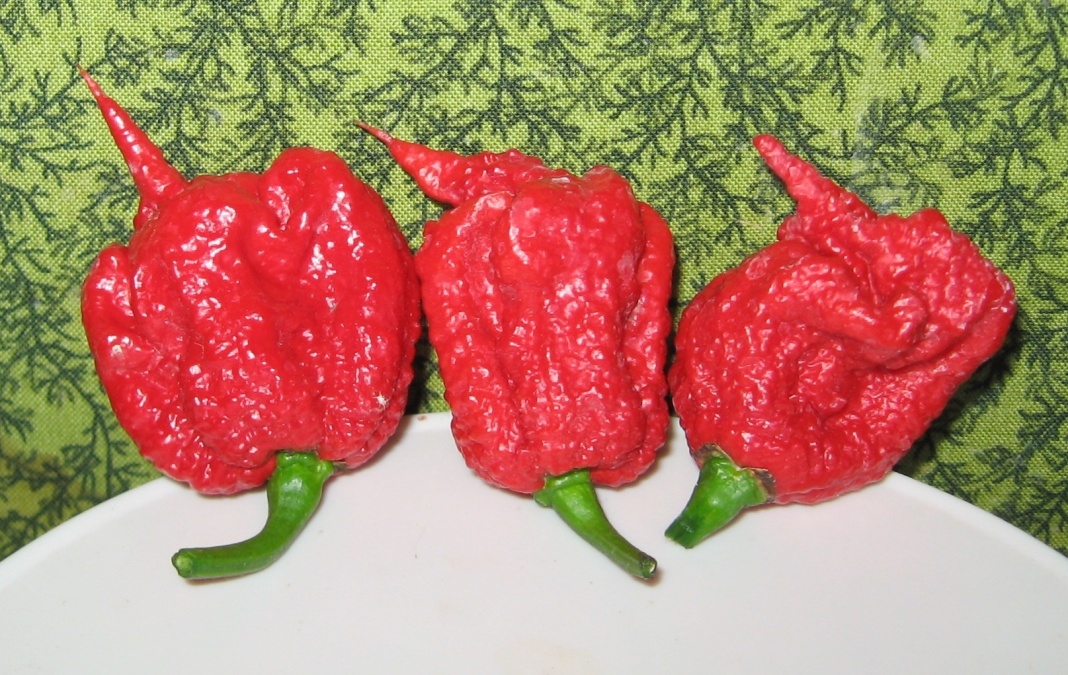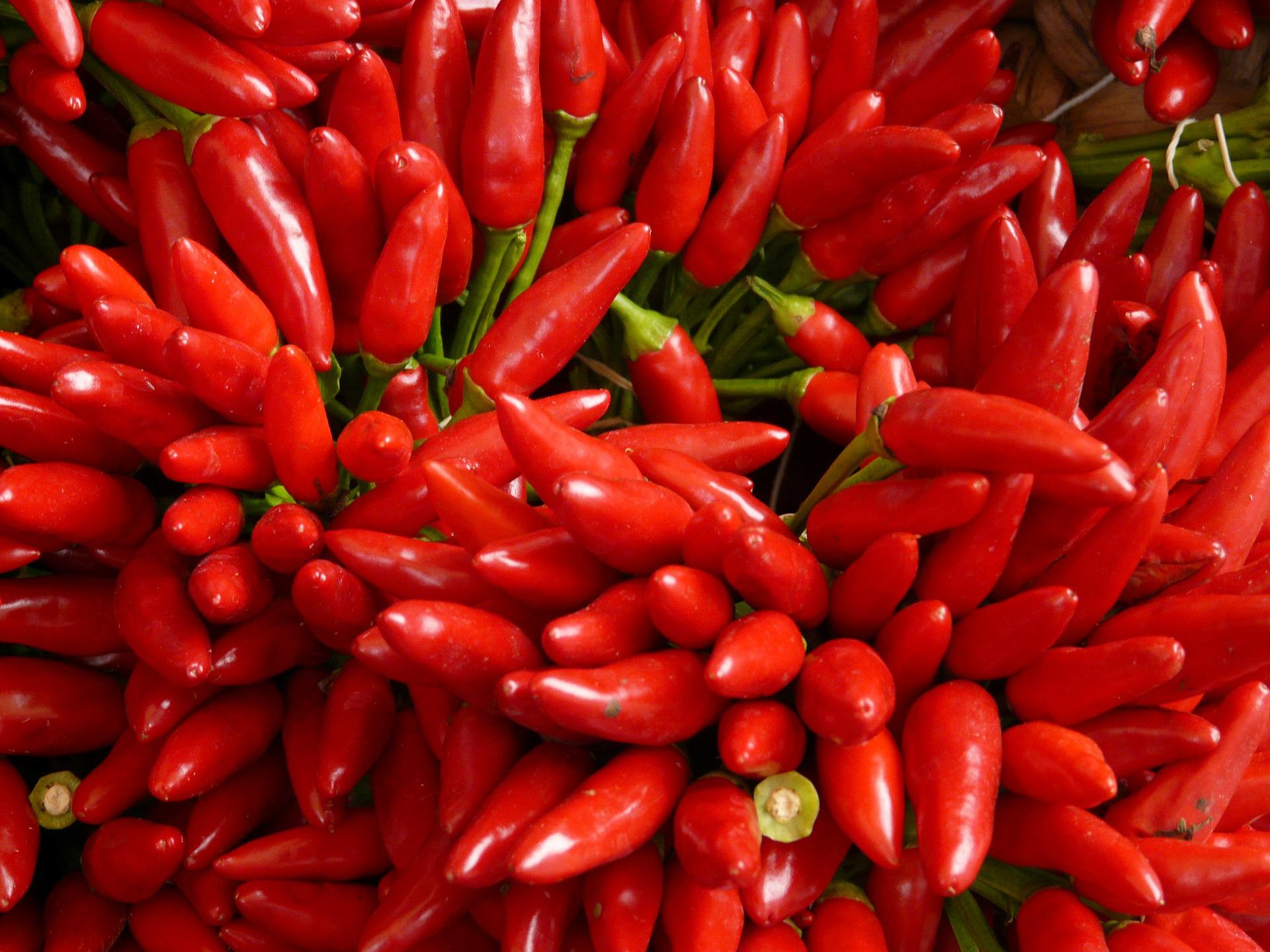A pleasure to burn: Why do people like spicy foods?

- Humans are the only animals known to willingly eat foods that cause irritation, discomfort, and even pain.
- Theories for why range from thrill-seeking behavior to an evolutionary adaptation for seeking foods that reduce pathogens.
- Taste results from an interplay of genes, culture, memory, and personality — a complex design that scientists are only now beginning to understand.
If a Martian anthropologist found its way to a Clifton Chili Club Chili Eating Contest, it would discover one the universe’s true oddities. Here, it would witness a group of bipedal primates cheering on other primates as they torture themselves with fruits that set their mouths on simulated fire.
By extraterrestrial standards, the rules are simple. The competition asks participants to nosh a chili pepper to the stalk. If they quit, throw up, or drink a glass of milk — which sits before them with tantalizing temptation — they are disqualified. Each round introduces a new pepper of increasing “pungency,” that burning heat as measured by the Scoville scale.
Things start easily enough with the dainty Padrón pepper, which averages around 500 Scoville heat units (SHU). By round 3, participants enjoy a classic jalapeno (3,000-6,000 SHU). Round 9 introduces the habanero (300,000 SHU). At this point, most participants are suffering inflamed eyes and molten saliva draining into their eruptively churning stomachs. The culling has begun.
In the final round, three competitors squared off against the Carolina reaper, the world’s hottest chili. Averaging 1,641,183 SHU, it is more than 250 times hotter than a jalapeno.
Which leads our Martian anthropologist to ask, why? Even setting aside the extremes of a chili eating contest, why do people all over the world enjoy spicy foods or any food that causes pain and irritation? What is going on with these funny Earth animals?

Capsaicin is for the birds
The truth is scientists — human scientists, that is — don’t know how people acquired a taste for tortuous cuisine. They’re not even sure why peppers began to sport capsaicin, the molecular compound that triggers your tongue’s pain sensors, in the first place.
Some evidence suggests that pepper plants use capsaicin as a mammalian repellent. That may seem odd, as most plants try to entice animals to spread their seeds with sweet flesh and enticing colors — not detract them with promises of a seared tongue.
But mammals’ strong stomach acids break down pepper seeds, reducing the plants’ fecundity. Birds’ digestive tracts, on the other hand, allow the seeds to pass through unharmed and be dispersed widely. Not coincidentally, birds aren’t sensitive to capsaicin. Their taste receptors don’t register its pungency.
There is also evidence that capsaicin is a natural antifungal. Studies have shown that pepper plants in fungal-rich environments produce more of the compound than those from drier environments.
Both theories explain the evolutionary advantages capsaicin provides the pepper planet. We simply don’t know which one, or perhaps another, was the impetus for the pepper plant to favor capsaicin-fueled fruit.

Those who favor fire
Getting back to people, there are several vying theories as to how humans developed a taste for pain. One is that we simply enjoy the thrill of it. Dr. Paul Rozin, professor of psychology at the University of Pennsylvania, argues that people use spicy foods as a type of “constrained risk” or “benign masochism.”
Eating spicy foods triggers a mild defense response in us. Our heart rates rise, our breathing increases, and our adrenaline starts to flow. We feel alive. It’s the same thrill-seeking behavior exhibited by bungee jumping, roller coasters, and horror movies. The thrill of pain rejuvenates us, while we secretly know all will be well in the end.
The Eastnor Castle Chili Festival Chili Eating Contest seems to support Rozin’s theory. While some people can get a thrill out of a roller coaster, others need to jump off a bridge with a literal lifeline tied to their legs. Similarly, while some people can get a jolt from a jalapeno or habanero, others require the Carolina reaper to jump start their heart. And as we desensitize ourselves to one thrill, a more extreme one must then take its place as evinced by the eternal quest for an ever-hotter pepper or mouth-melting hot sauce.
Add to that the sense of camaraderie and community that naturally comes with food, and our Martian anthropologist may yet understand the ritual.
“Humans and only humans get to enjoy events that are innately negative, that produce emotions or feelings that we are programmed to avoid when we come to realize that they are actually not threats,” Rozin told The New York Times. “Mind over body. My body thinks I’m in trouble, but I know I’m not.”
Further supporting Rozin’s theory is that all other mammals avoid spicy, painful foods. In fact, we know of only one other mammal that shares a taste for peppers: the Chinese tree shrew. But tree shrews aren’t nature’s chili-heads. It has instead evolved taste receptors that makes it less sensitive to capsaicin, thus expanding its food options. In other words, the shrew doesn’t take pleasure in a smoldering snack like we do.
An acquired taste
Another theory points to spicy foods’ antifungal and antibacterial properties. In this light, humans have culturally and genetically evolved a preference for spicy foods because they protect us from microscopic assailants. When our taste buds encounter pungency, it’s a signal to our brains that the food is cleaner.
A report published in the Quarterly Review of Biology looked at “[m]ore than 4,570 recipes from 93 cookbooks representing traditional, meat-based cuisines of 36 countries,” as well as the antibacterial properties of the spices used. Their report found that where spoiled food is more of a concern, spices are more frequently used. The authors write:
Countries with hotter climates used spices more frequently than countries with cooler climates. Indeed, in hot countries nearly every meat-based recipe calls for at least one spice, and most include many spices, especially the potent spices, whereas in cooler countries substantial fractions of dishes are prepared without spices, or with just a few.
Beyond peppers, the research looked at less pungent preservatives. Garlic, onion, cumin, thyme and black pepper were all found to have antibacterial properties. Paul Sherman, an evolutionary biologist and one of the report’s authors, noted that lab tests on 30 common spices have shown that “at least half of them kill or inhibit 75 [percent] of the bacteria they have been tested on.”
Sherman also looked at vegetable recipes and found that spices are less common in them than meat dishes. This finding bolsters the theory. If spices were only about the taste, one would expect them to be found in equal proportions. It also deflates another theory that spices are preferred for their nutritional value, as vegetables are eaten in much greater quantities.
As Sherman puts it: “Everything we do with food — drying, cooking, smoking, salting, or adding spices — is an attempt to keep from being poisoned by our microscopic competitors. They’re constantly mutating and evolving to stay ahead of us. One way we reduce food-borne illnesses is to add another spice to the recipe.”
These two hypothesis may prove to line up with further research. It’s possible our evolution led us to enjoy pungent food, while our natural thrill seeking behavior spurred us to cultivate peppers of unnatural heat.
Why we like what we like
Of course, this article has ignored one crucial point: Not everybody likes the same level of heat and some people don’t enjoy spicy foods at all. If people evolved a taste for spice, either for the thrill or its cleaning properties, why don’t all people enjoy a nice chili eating contest?
As will surprise no one, the answer is that taste is complex. The number bumps of on your tongue, called papillae, can make you a “supertaster” or a “subtaster.” Genes influence how your taste preceptors perceive flavors like bitterness. A bad childhood experience can turn you off to a food for life. And the interplay between culture and taste preference, as argued by John Hayes, is a chicken and egg problem.
“Is it that cultures use a ton of cilantro have a low proportion of people who find it soapy? Or, the other possibility is it just part of the cuisine so they just learn to deal with it,” Hayes, associate professor of food science at Pennsylvania State University told U.S. News. “We don’t know.”
Hayes’ research has even shown a link between taste and personality. In a 2013 survey, he found a positive correlation between sensation-seeking and reward-sensitive personality types and those who liked spicy foods. This supports Rozin, but the antibacterial hypothesis isn’t out yet.
While not everybody likes spicy food, other popular flavors display bactericidal properties, too. Sherman’s study showed that mint and sour foods, like lemons and limes, are also bacteria inhibitors.
And your brain may still register a food’s clean burn, even if it isn’t consciously palpable. When peppers were introduced to Europe, the Hungarians cultivated them into bell peppers. Sweeter and less pungent, the bell pepper nevertheless maintains antibacterial properties. And research out of the University of Southern California found that the carbon dioxide in fizzy drinks triggers a burning sensation in our pain sensors, the same response as horseradish albeit at a lower intensity. (Soda, it seems, hurts you in more ways than empty calories.)
Taken together, our understanding of taste would give any Martian anthropologist, and our human scientists, a lot to consider. Ultimately, how one species of primates came to mix pain, pleasure, and sustenance remains a tasty mystery.
This article was originally published on Big Think in March 2019. It was updated in August 2022.





